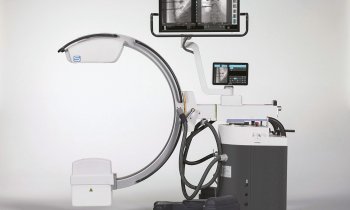Oncology
It will help us to detect undeveloped tumours
In recent years new imaging procedures have delivered many answers and solutions for oncological diagnostics and therapy.
However, one question could not be answered: Is a tumour developing?

The ability to detect dysplasia – the early stages of cell changes from which tumours develop – would answer this question, and present a huge advance in oncology. Now, thanks to researchers such as Professor Juergen Borlak and team – Professor Michael Galanski, Dr Christian von Falck and Dr Thomas Rodt – a significant milestone is in sight. The pace towards it quickened due to molecular imaging, which can capture the formation phase of a malignant tumour. Using hepatocellular carcinoma as an example, Prof Borlak explained the team’s research to Meike Lerner of European Hospital
Prof Borlak: The importance of early detection, particularly for hepatocellular carcinoma, can be seen in patients with PSC (primary schlerosing cholangitis) or cirrhosis of the liver. In these cases the liver shows chronic changes. Conventional methods, such as CT, MRI or ultra sound can localise these changes, but these imaging procedures cannot confirm whether dysplasia is present. This has to be confirmed via biopsy, which is not always practical when a multitude of changes has been detected.
Even if there are no current dysplastic changes we know that with this disease pattern the probability of tumours developing and having to be removed – or even a liver transplant being necessary – is very high. If the point where the tumour developed is known, then surgical intervention can be carried out in time and liver resection should be sufficient. However, this has been the big dilemma so far – knowing that the formation of tumours is highly likely, but still not being able to intervene in time because the immediate preliminary stage of the tumour – dysplasia – cannot be detected with the imaging procedures that have been available to us to date.
Now, however, molecular imaging is giving us the opportunity to detect and examine these early changes with the help of specific tracers that show metabolic processes typical for dysplasia.
We are initially testing this method in animal experiments, in which we examine the biological processes of dysplasia. We have a model that reflects the human disease pattern very well, and to examine dysplasia development in great detail. We have found metabolic and cellular changes that can be selectively found in dysplastic tissue, and now aim to make these specific biomarkers visible with different tracers. This should enable us, for the first time, to capture dysplasia from an imaging perspective and to distinguish it from simple regenerative proliferation. Based on this knowledge, we can then define the decision tree and determine whether we need to intervene surgically, with medication or not at all.
A further, important point is that we can not only show dysplasia, but localise it, which means we can see whether an organ is affected in its entirety or only partially.
Meike Lerner: When are these procedures likely to be ready for clinical use?
At the moment the procedure, as well as the different tracers, are already being preclinically trialled. Because of PET diagnostics the results can be fairly easily transferred into clinical practice, as the PET examination needs only very small quantities of each respective tracer to produce diagnostically useable images. This also means that there should be no problems with tolerance. We believe that, for clinical use for certain applications, this method should be ready in about a year’s time.
Your dysplasia research centres on the liver. Could the results be transferred to other organs?
The display of a dysplasia depends on the tracer. In the liver, for instance, neuro-endocrine tumours can be made visible with somatostatin receptor agonist following Dotatoc-Tracer labelling in the liver, spleen or adrenal gland. Other organs do not have those receptors, which is why this special tracer does not work and display in the PET is not possible. The difficulty here in my view is to find specific biomarkers that can characterise the tumours.
Here the use of antibody-based molecular imaging, where antibodies are marked and therefore made visible, could play an important role. And, there is a further benefit: therapeutic use. If we manage to selectively capture the direct interaction of the antibody on the surface of a tumour we not only have a suitable tracer for diagnostic imaging but also the opportunity to test the therapeutic effectiveness of the antibody. This is where I see the future and opportunities in molecular imaging, for the years to come.
A further step, resulting from possibilities for molecular imaging, is the quantification of tumours. This is where software applications will be used that make it possible to determine the volume of a tumour quantitatively, based on certain algorithms. This is very relevant for our lung cancer model, as it is a diffuse tumour spread. The question here is how to measure tumour growth, because it is not a distinct tumour, but tumours in different locations. The idea is that, based on the volume of the aired lung, and of the tumour, therapeutic success can be determined quantitatively. In return, the aired volume should allow quantification of the area affected by tumours.
29.05.2007








